The Gambian village transformed by graffiti
- Published
In a bid to lure tourists, internationally-renowned graffiti artists were invited to create artworks in a village in The Gambia, writes the BBC's Clare Spencer.

The Belgian graffiti artist ROA is known for painting huge murals of animals on multi-storey buildings in large cities, like London, Berlin and Mexico City. But in the village of Galoya, in The Gambia's Kombo Central District, the scale of his work is much smaller.
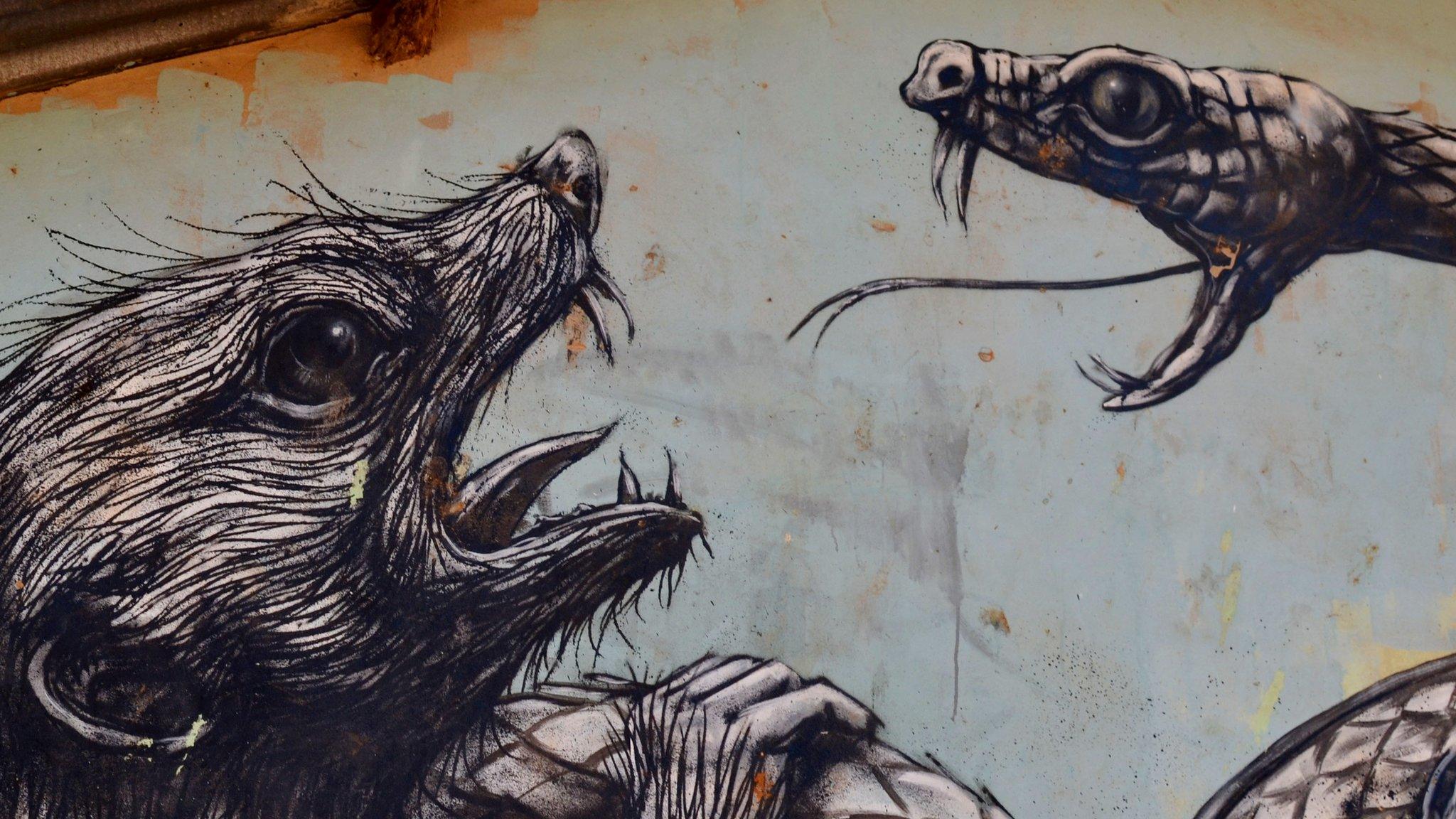
He paints animals native to the location, like the meerkat, above, and pangolin, below. But that is almost all that is known about him. The person who invited him to The Gambia, Lawrence Williams, knows him simply as Peter.
"He is very secretive about his identity" said Mr Williams.
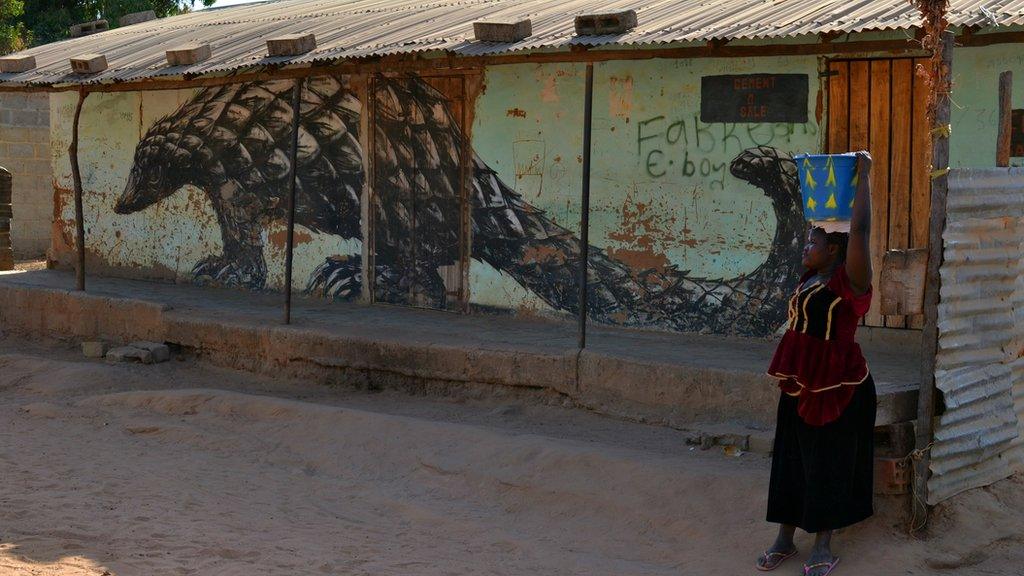
ROA was one of many artists to come to Galoya and its neighbouring villages from 2011 for a project called Wide Open Walls.
It all started when Mr Williams, a lodge owner, met top Gambian artist Njogu Toure at a tourism industry event. Mr Williams, a UK national, had been looking for a way to get involved in the community around his lodge and to lure tourists away from the coast.
The two formed an artist collective called Bush Dwellers. Among their artworks was a Banksy-inspired stencil, below, featuring the girls of the village of Makumbaya.
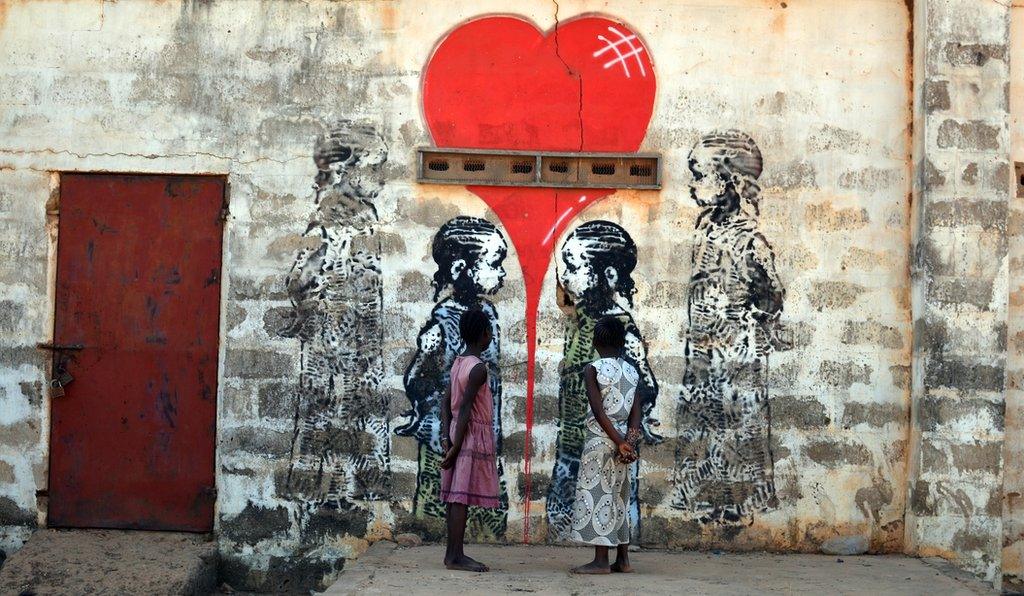
Although Mr Williams had gone to art school, he said he "had zero contacts in [the] street art world". He sent an email to graffiti artist Eelus, known for his art painted in different shades of grey.
"Eelus brought over big names in the street art world, that opened a lot of doors," said Mr Williams.
The project saw graffiti artists from around the world stream in to these tiny villages, sometimes twice a year. British artist collaborative Best Ever, whose painting of a man lying sideways is featured below, returned to The Gambia around eight times.
Villagers had the opportunity to contribute to the artworks. US-based artist Andrew Breitenberg quoted one of the village elders, who said: "I work carefully to open my heart," after an afternoon discussion about what text should feature on top of Best Ever's painting.
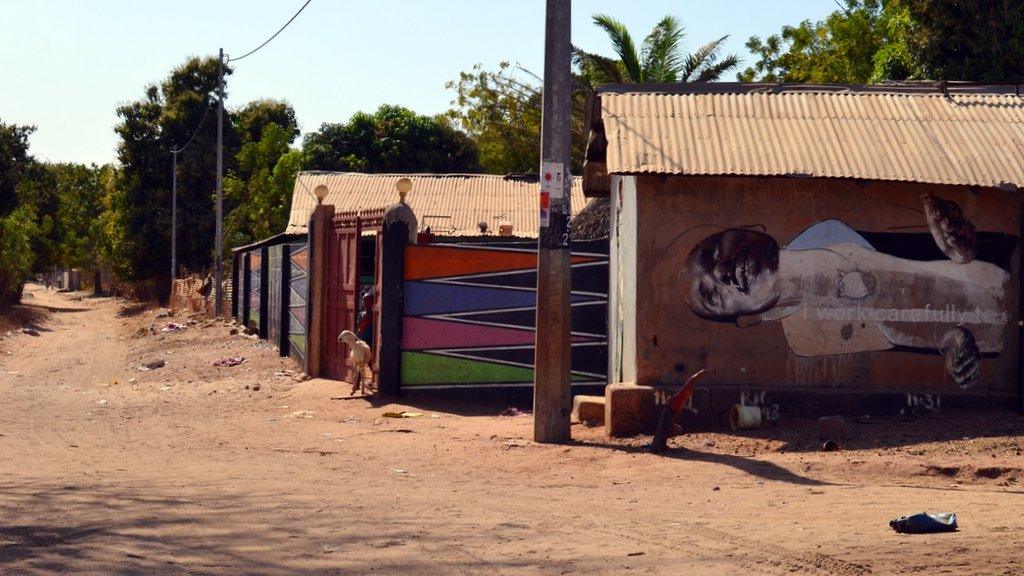
For some artists, like the Israel-based American Addam Yekutieli, who goes by the pseudonym Know Hope, it was their first visit to an African country.
"We are painting on people's houses, which is different to a wall that is owned by a shopping mall or bank," Mr Yekutieli told the BBC.
His work would appear overnight in major cities, an element of surprise that was lost in Galoya. Villagers knew what he was doing from the first stroke of paint. Some even sat in front of his work, literally watching paint dry.
His painting of figures linking arms, below, is inspired by the village well, opposite it, which he saw as a meeting point for the community.
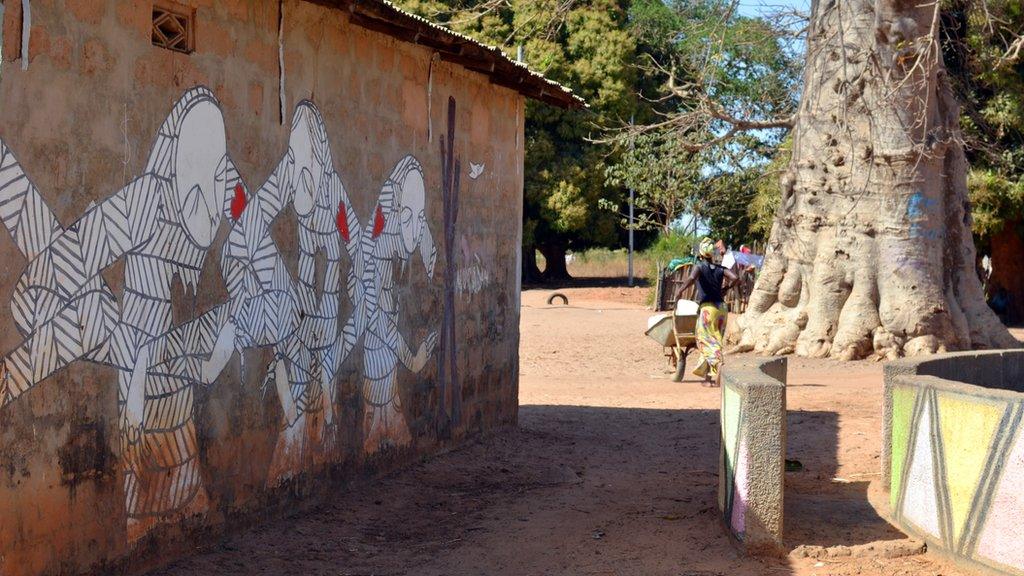
A similarity of street art in big cities and paintings in a village like Galoya is that the works do not last very long.
At least five paintings I had seen posted on Instagram had disappeared by the time I visited.
Villagers told me that was because many of the painted homes were made of mud, which crumbled in the rainy season.
"I think there is something metaphorically beautiful about that - honest about natural transformation" Mr Yekutieli told the BBC.
This might not be the first thing on the mind of someone who had lost their home.
Mr Williams recognised the problem and started giving out cement to the villagers. In 2016, villagers gave Mr Williams some land to build a nursery.
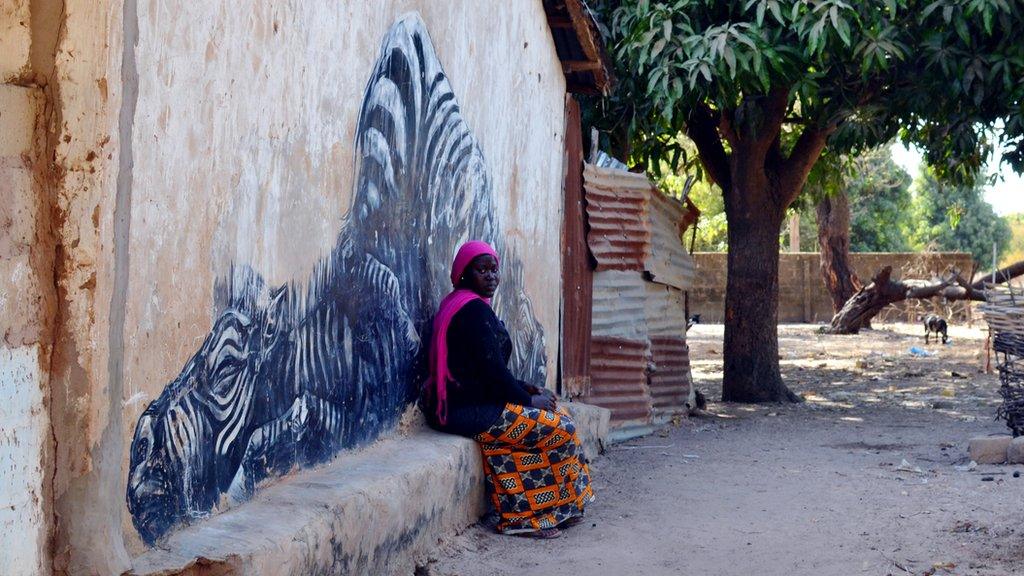
While villagers like the paintings, they also expressed frustration.
Sarjo Beyai, a 20-year-old woman pictured above, said that when tourists visit the zebra ROA painted on her house she cannot communicate with them because she does not speak English.
Amadou Soule told me that apart from the odd tip from tourists, he was disappointed in not financially benefitting from ROA's painting of a giant elephant on the side of his house, pictured below.
"I was hoping for a sponsor for my teacher training," he said.
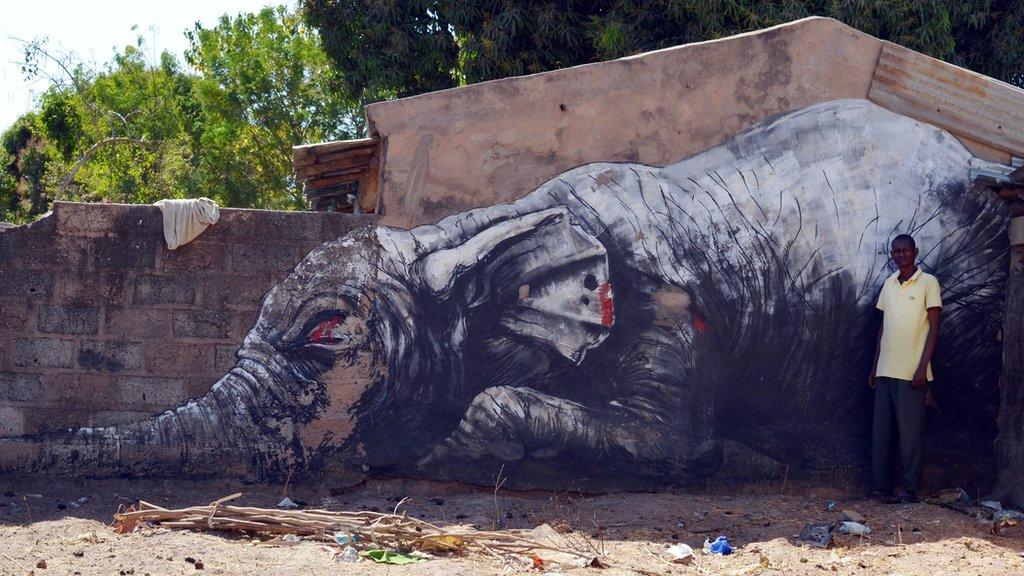
And many villagers complained that the promise of a nursery had not materialised.
"There is a community fund that is set up, there is money in the bank that is just sitting there," Mr Williams, who left the country a year ago, said.
He had a car accident in East Timor where he "almost died" and has not been back to The Gambia since, he added.
He plans to start building the nursery in November, but says there is no timeframe for it.
The art has, nonetheless, made an impact.
British artist Remy Rough is known for painting bold colours and geometric shapes across grand expanses.
Villagers watched his technique - using masking tape - and started copying it across walls and whole buildings.
This is one of many walls created, not by foreign artists, but by people who live in Galoya village:
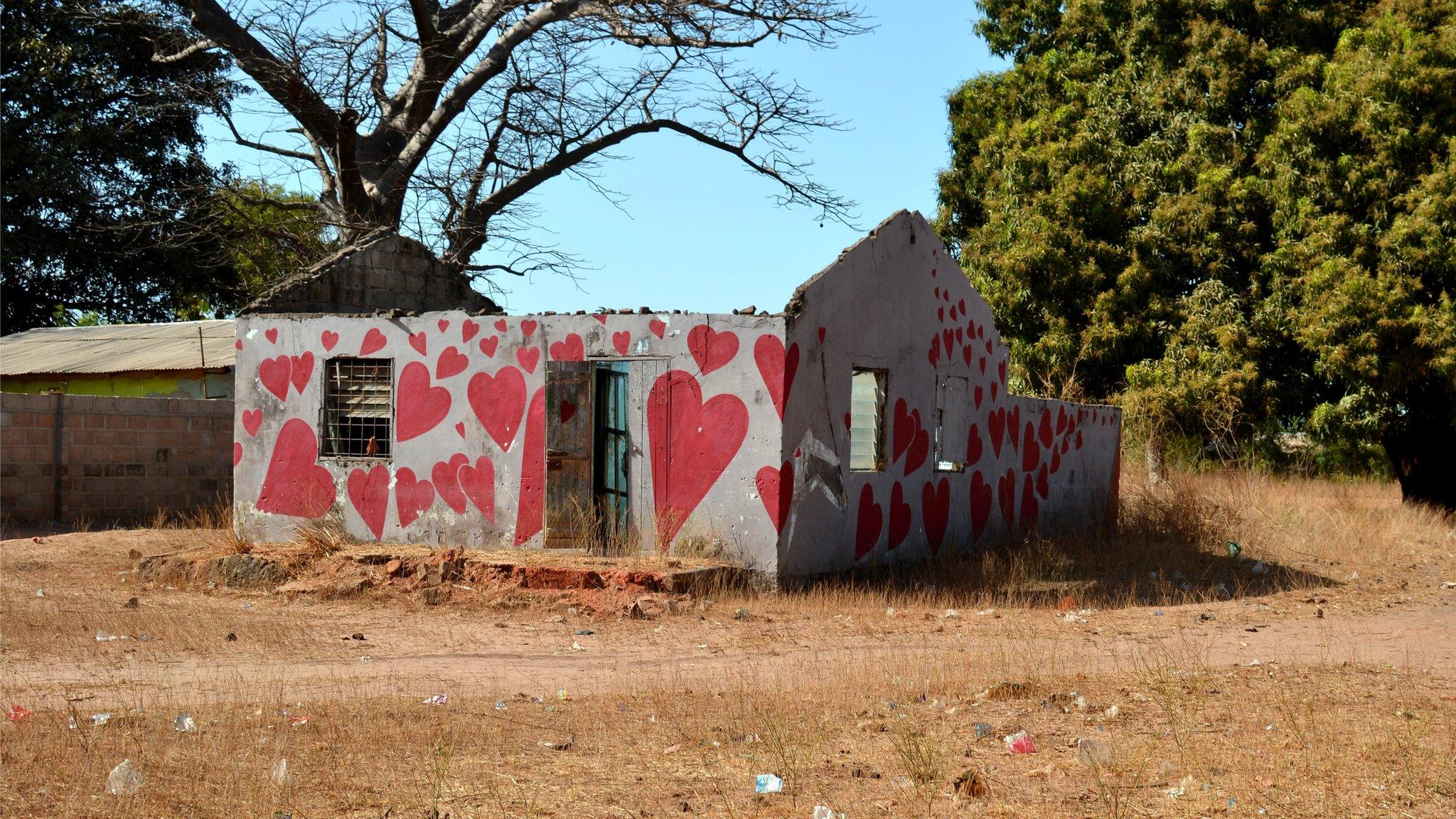
All photographs and interviews by Clare Spencer.